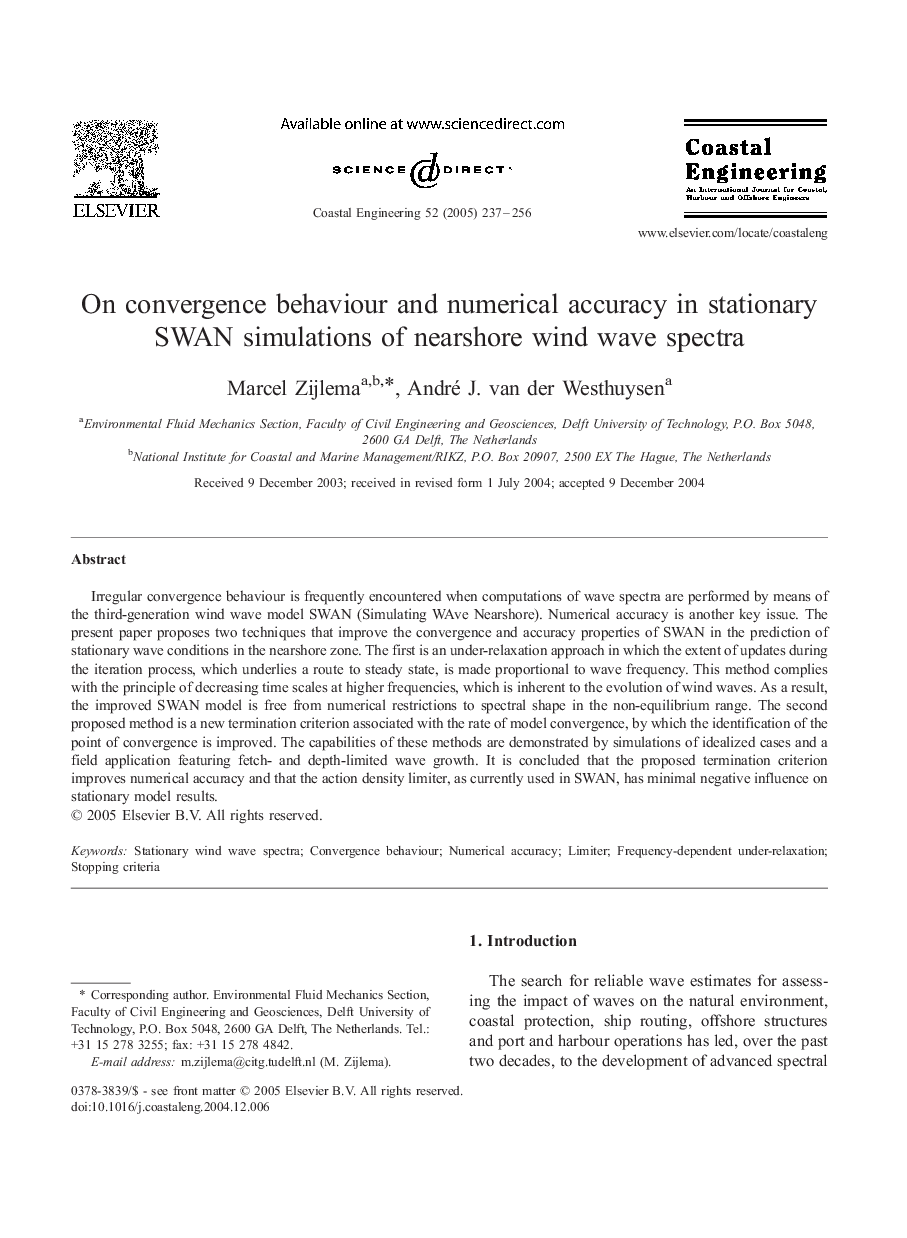| Article ID | Journal | Published Year | Pages | File Type |
|---|---|---|---|---|
| 10681978 | Coastal Engineering | 2005 | 20 Pages |
Abstract
Irregular convergence behaviour is frequently encountered when computations of wave spectra are performed by means of the third-generation wind wave model SWAN (Simulating WAve Nearshore). Numerical accuracy is another key issue. The present paper proposes two techniques that improve the convergence and accuracy properties of SWAN in the prediction of stationary wave conditions in the nearshore zone. The first is an under-relaxation approach in which the extent of updates during the iteration process, which underlies a route to steady state, is made proportional to wave frequency. This method complies with the principle of decreasing time scales at higher frequencies, which is inherent to the evolution of wind waves. As a result, the improved SWAN model is free from numerical restrictions to spectral shape in the non-equilibrium range. The second proposed method is a new termination criterion associated with the rate of model convergence, by which the identification of the point of convergence is improved. The capabilities of these methods are demonstrated by simulations of idealized cases and a field application featuring fetch- and depth-limited wave growth. It is concluded that the proposed termination criterion improves numerical accuracy and that the action density limiter, as currently used in SWAN, has minimal negative influence on stationary model results.
Related Topics
Physical Sciences and Engineering
Engineering
Ocean Engineering
Authors
Marcel Zijlema, André J. van der Westhuysen,
